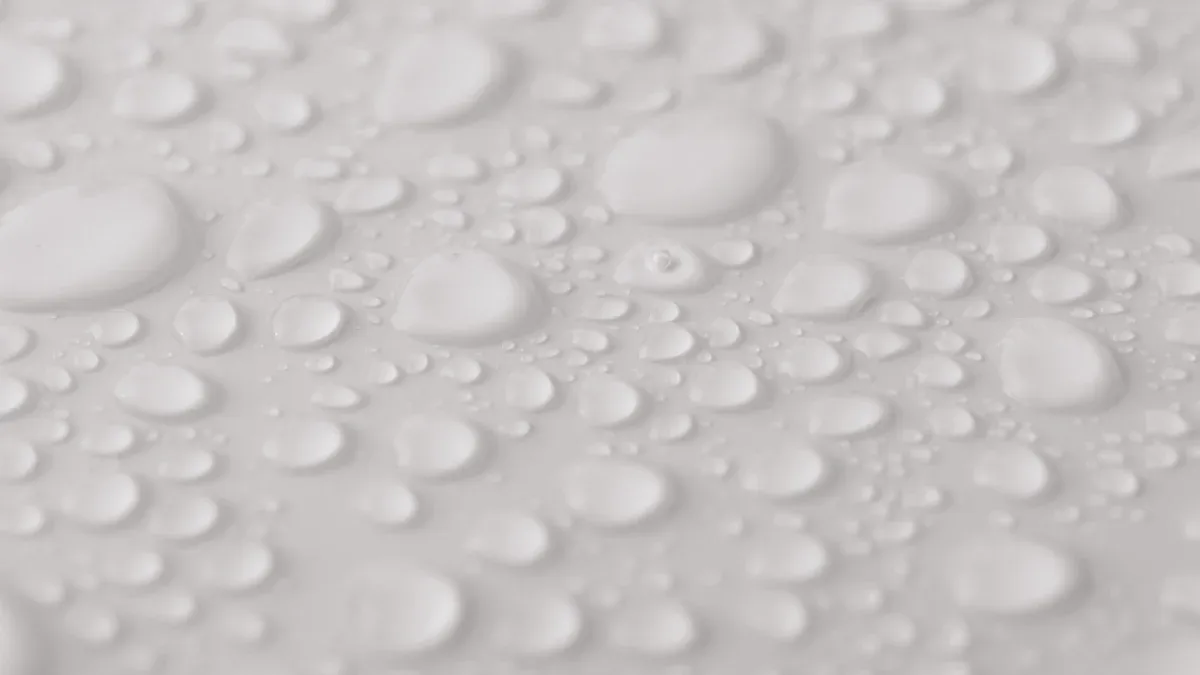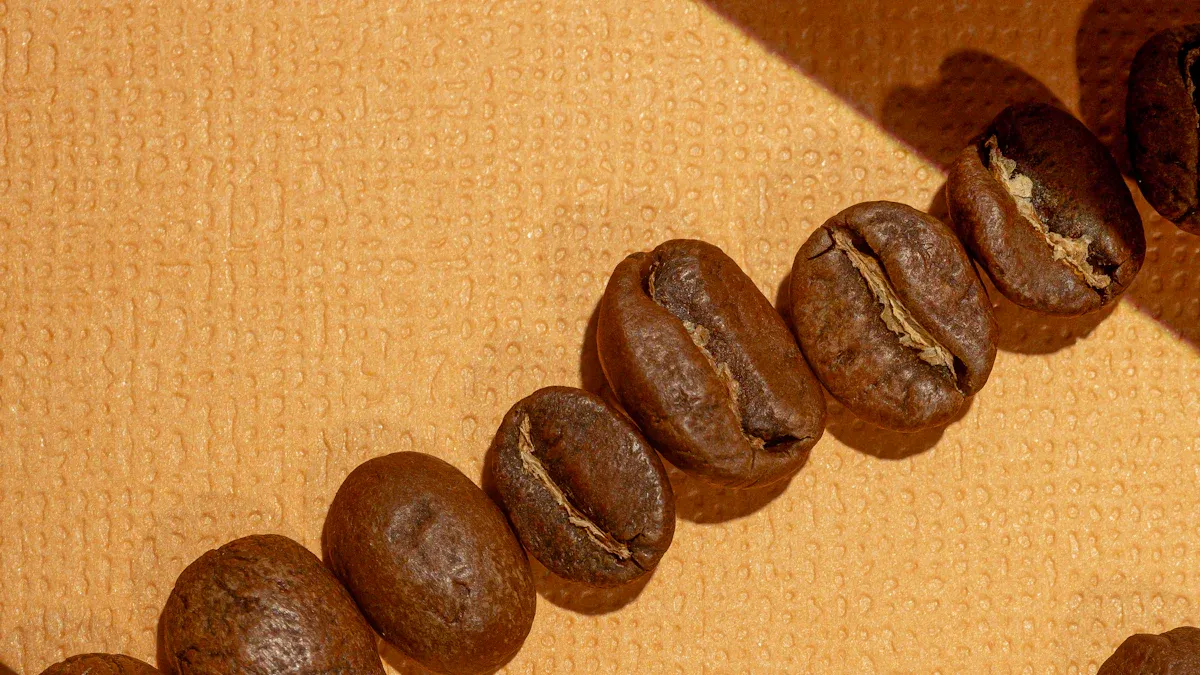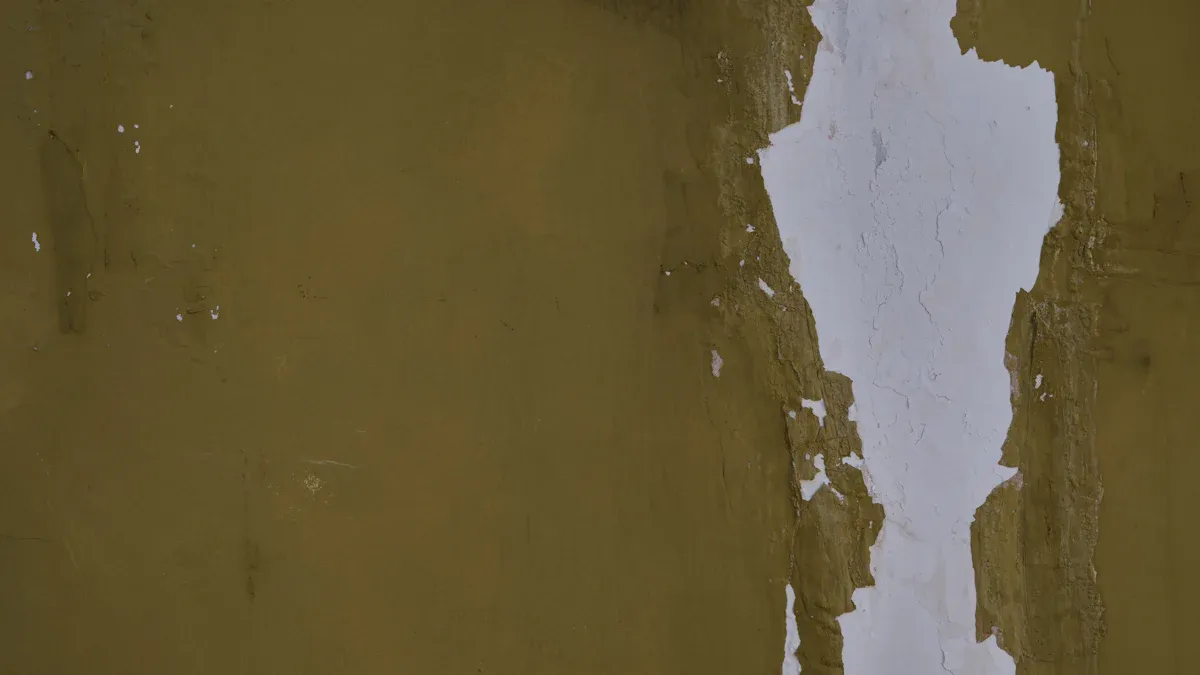What Are Entrainment Defects in Metal Casting and Why Should You Care

Entrainment defects happen in metal casting when air or oxide layers get stuck in the liquid metal during casting. These defects make the final product weaker and can cause leaks or breaks. People who work with casting should care about entrainment because even a little bit can cause expensive problems.
Entrainment usually happens because of problems in the casting process, like too much movement or not controlling the melted metal well.
Aspect | Impact |
|---|---|
Product Failure | Entrainment defects create weak spots, which can cause leaks and make the metal less strong. |
Cost | More scrap and extra checking make manufacturing more expensive. |
The casting process must control entrainment to make sure metal parts are strong and work well.
Entrainment Defects

What They Are
Entrainment defects happen when air, oxide films, or other things get stuck in liquid metal during casting. These problems can look like bubbles, bifilms, or bits of debris. Bubbles leave bubble trails inside the metal. Bifilms are folded oxide layers that act like cracks. Exogenous inclusions are pieces of debris caught in the metal.
Bifilms are folded oxide films that act like cracks
Exogenous inclusions are trapped debris
Entrainment happens most when the metal moves too fast or splashes. This traps air and makes smooth holes inside the metal. These holes can look shiny or have oxide inside. Other casting problems, like surface flaws, come from mold issues. But entrainment defects come from trapped gases and fast-moving metal.
Tests with aluminum alloys show oxygen and nitrogen inside these defects react with the melt. This makes oxides and nitrides. Hydrogen can also mix into the melt and change the defects. This shows bifilms are a big problem in casting. Die casting entrainment causes the same problems if the metal flow is not controlled.
Why They Matter
Entrainment defects are important because they make metal weaker. These defects are stress points. They make the metal more likely to crack or break. Studies show gases inside double oxide films in magnesium and aluminum alloys react with the melt. But the defects still cause holes and make the metal weaker.
If bifilm defects stay in the casting, the metal cannot stretch or hold weight as well. Tests show these defects start cracks and make failure more likely. Even a small amount of die casting entrainment can make the product less reliable.
Note: Entrainment defects do not always show on the outside. They often hide inside the metal. You need special tools to find them.
If entrainment defects stay in the casting, the metal will not last as long. These weak spots can cause sudden breaks, even after years. The strength and stretchiness of the metal can change a lot. Some castings might break much sooner than others. Better refining and filtering can lower bifilm content. This makes castings stronger and last longer.
Die casting entrainment also makes more holes and weak spots in the metal. If the process does not control gas and movement, the casting will have more problems. Good process control, steady mold filling, and proper degassing help lower entrainment. This makes the metal stronger and more reliable.
Formation

Oxide Films and Bifilms
Oxide films show up on top of melted metal during casting. When people melt, move, or pour metal, these thin layers form fast. If the flow is not controlled, oxide films can bend and sink into the metal. This bending makes bifilms, which look like double layers inside. Bifilms act like cracks or small holes that you cannot see. They trap gases and make weak spots in the metal. These weak spots lower the casting’s quality and make it less safe.
Researchers say bifilms are the main reason for entrainment defects in many alloys. In aluminum and magnesium, bifilms stay inside and do not float out. They stay as hidden cracks that can cause the metal to fail. In steel, some bifilms can float out, but most stay and hurt the casting. Entrainment starts when oxide films form, then fold into the melt, and trap air or gas. This makes defects that lower the strength and quality of the finished product.
Imagine bifilms like a sandwich with two bread slices (oxide layers) and air in the middle. This “sandwich” hides inside the casting and makes it weaker.
Turbulent Flow in Casting
Turbulent flow happens when melted metal moves too fast or splashes. High gating speed, over 0.5 meters per second in aluminum, makes the surface mix with air. This rough movement folds oxide films and pushes them into the metal. This creates more bifilms and entrainment defects. Complex gating shapes, like waterfalls or cone cups, make turbulence worse.
When the flow is smooth and calm, fewer oxide films get trapped. But rough flow makes more defects. Turbulent flow acts like a whisk, mixing air and oxide into the metal. This causes more weak spots and lowers casting quality. To make better castings, workers must keep the flow gentle. This cuts down on entrainment and helps make stronger, safer metal parts.
Problems
Mechanical Impact
Entrainment defects have a big effect on the strength of metal parts. When these defects form inside a casting, they act like hidden cracks or holes. These weak spots lower the ability of the metal to hold weight or bend without breaking. Many tests show that the more defects in a casting, the weaker the metal becomes. The shape and spread of these defects matter a lot. Sharp or pointed defects cause stress to build up, making the metal break more easily.
Mathematical models and lab tests both show that oxide films and other casting defects change how strong a casting is. If defects spread out evenly, the metal stays stronger. If they gather in one spot, the metal can fail suddenly. The way the metal flows into the mold also changes the number and type of defects. For example, a vortex runner makes the defects spread out more, which helps the casting stay strong.
Metric / Factor | Description / Impact |
|---|---|
More defects per area means lower strength. | |
Area Fraction of Defects | Higher percentage of defects lowers bend strength. |
Ultimate Bend Strength (UBS) | Drops as defect numbers go up. |
Defect Distribution | Even spread keeps strength higher; clusters cause weak spots. |
Defect Morphology | Sharp shapes make the metal break faster. |
Scrap and Failures
Casting defects like entrainment cause a lot of scrap in metal casting shops. Studies show that up to 80–90% of all casting scrap comes from these defects. When defects hide inside the metal, workers cannot always see them. This means some castings pass checks but fail later during use. These failures can lead to leaks, cracks, or even total breakage in machines or cars.
High scrap rates mean more wasted metal and higher costs. Factories must melt and pour new metal to replace bad castings. This uses more energy and time. Companies also spend more money on testing and repairs. By lowering entrainment and other casting defects, shops can save money and make safer, stronger metal parts.
Detection
Visual Signs
Workers look at metal parts for clues on the surface. They may see small holes, blisters, or shiny spots. These can mean air or gas got trapped during casting. But entrainment defects usually hide inside the metal. The outside often looks smooth and fine. Surface checks miss these hidden problems. Even skilled workers cannot see inside with just their eyes.
Sometimes, bubbles or cracks show up after machining. These can mean there are deeper problems. If a casting breaks too easily or leaks, it might have hidden entrainment. Shops use dye penetrant or magnetic particle tests for cracks on the surface. These tests work well for surface flaws but not for deep defects.
Note: Most entrainment defects stay hidden until the casting breaks or is processed later.
Advanced Inspection
Because entrainment defects form inside, shops need special tools to find them. They use tools that look inside the metal without cutting it open. Ultrasonic Testing sends sound waves through the metal. The waves bounce back from bubbles or oxide films. This helps find hidden air pockets and bifilms that make the casting weak.
Radiographic Testing uses X-rays or gamma rays to take pictures inside the casting. This shows shrinkage, gas pockets, and oxide layers. Both Ultrasonic and Radiographic Testing work well for finding entrainment defects. Surface tests like dye penetrant or magnetic particle inspection do not find these hidden problems. Shops pick the best method based on the metal type and casting size.
Inspection Technique | Defect Detection Capability | Suitability for Entrainment Defects |
|---|---|---|
Ultrasonic Testing (UT) | Finds inside defects with sound waves; shows hidden holes, shrinkage, and inclusions | Very good for finding inside air bubbles and oxide films (bifilms) |
Radiographic Testing (RT) | Uses X-rays or gamma rays to see inside; shows shrinkage, gas holes, and inclusions | Very good for finding inside entrainment defects like air bubbles and oxides |
Dye Penetrant Testing | Finds cracks on the surface by using dye and powder | Good only for surface or near-surface defects, not for inside entrainment defects |
Magnetic Particle Inspection (MPI) | Finds surface and near-surface cracks in magnetic metals with magnetic particles | Good only for surface or near-surface defects, not for inside entrainment defects |
Eddy Current Testing (ECT) | Finds surface and near-surface cracks by using electric currents | Good for surface defects, not mainly for inside entrainment defects |
Infrared Thermography | Finds defects by looking at surface temperature changes | Can find some subsurface defects but not specific for entrainment defects |
Acoustic Emission Testing (AET) | Listens for sounds from cracks or breaks | Good for finding cracks, not direct for entrainment defects |
Shops that use these special tools find more hidden problems. They can remove weak castings before sending them out. This helps keep metal parts strong and safe.
Prevention in Casting
Pouring Techniques
Using good pouring methods helps stop entrainment defects. Workers can use special ladles that pour metal from the bottom. This keeps oxide layers and dross out of the melt. Ceramic filters in the gating system catch inclusions before they get in the mold. Swirl gates spin the liquid metal. This pushes lighter inclusions to the center and away from the casting. Foundries also get the melt ready and design molds to lower air mixing.
How fast and at what angle you pour matters a lot. The table below shows how different pouring angles change the flow and risk of entrainment:
Pouring Angle (°) | Flow Characteristics and Effects on Entrainment Defects |
|---|---|
0 | High turbulence, more defects, higher wall stress |
30 | Surface disturbances, increased turbulence |
45 | Calmer surface, reduced turbulence, fewer defects |
60 | Low turbulence, calmer surface, fewer inclusions |
90 | Symmetrical flow, lowest velocities, least defects |
Pouring too fast or using a bad sprue design causes problems. This can pull gases into the molten metal. Gas entrainment and bifilms can form. Too much sprue volume and backflow also raise the risk of defects. Workers must control pouring speed and use the right gating design. This keeps the casting process safe and works well.
Mold and Process Control
Mold design and process control help lower entrainment defects. Foundries make sure ventilation and gating systems let gases escape. This keeps metal flow smooth. Advanced simulation software helps find where defects might form. Teams can fix problems before making parts. Picking mold materials with the right grain size helps gases escape and makes better castings.
Even cooling is important. Mold thickness and cooling channels must be planned well. This stops stress and uneven solidification. Gates should be placed to keep melt flow even and lower air getting trapped. Fan gates are good for thin parts. Good exhaust systems, like vent grooves or breathable materials, help gases get out.
Operators need good training to spot and stop defects. Training teaches mold prep, pouring methods, and quality checks. Teams use simulation tools and statistics to watch the casting process. They adjust settings as needed. Lean six sigma and feedback between teams help find and fix root causes. Ongoing learning and teamwork keep the casting process strong and safe.
Tip: Checking the process often and making changes helps keep casting quality high and lowers entrainment defects.
Knowing about entrainment defects helps makers stop weak spots and big failures. Teams can make fewer defects by slowing down the metal and using filters. This makes the casting better. Studies show that changing the mold and how fast metal is pressed makes castings stronger. If shops lower entrainment defects, they throw away less metal, use less energy, and make more money. Checking the casting steps often and always trying to get better keeps castings safe and strong. Each part of the process, from pouring to checking, changes how good the casting is.
Paying close attention to each casting step helps save money and makes better products for a long time.
FAQ
What causes entrainment defects in metal casting?
Entrainment defects happen when air, oxide films, or debris get stuck in melted metal. Pouring too fast or splashing can cause these problems. Bad mold design also makes defects more likely. Workers can help by slowing down the metal flow. Using good casting methods also lowers the number of defects.
How can workers spot entrainment defects?
Most entrainment defects hide deep inside the metal. Workers use X-rays or sound waves to look for them. Checking just the outside will not find these hidden problems. Shops need special tools to find defects that are not easy to see.
Do entrainment defects always make castings fail?
Not every defect makes the metal break right away. Small defects can make the metal weaker over time. Big or many defects together can cause sudden breaks or leaks. Checking castings often helps stop surprise failures.
Can foundries prevent all entrainment defects?
Foundries can lower the number of defects, but they cannot stop every single one. Good pouring, smart mold design, and careful work help a lot. Training workers and watching the process closely also make better castings.
Why do entrainment defects increase costs?
Entrainment defects mean more scrap and extra testing. Factories spend more money fixing or replacing bad parts. These problems also slow down how fast things get made. Stopping defects saves money and makes products work better.
See Also
Effects Of Thermal Stress On Die Casting Parts
Exploring Functional Testing Methods For CNC And Die Casting
Advantages Of Using CAE Analysis In Die Casting Design
A Guide To Aluminum Extrusion And Die Casting Techniques
Key Procedures For Testing And Inspecting Die Casting Molds
About Hunan Puka
Established in 2016 and based in Hunan, China, with a liaison point in Berlin, we are a Tier 2 supplier for the automobile industry. We specialize in the production of customized aluminum die-casting parts designed for machines with a closing force ranging from 280 to 1250 tons, with subsequent manufacturing process CNC machining and surface treatment. Our commitment to quality is reflected in our accredited quality management system, certified by ISO9001:2015 and IATF16949:2016 standards.


